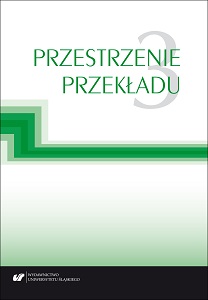Переводят ли мужчины и женщины действительно по-разному? (на материале четырёх эстонских переводов повести А.Н. Толстого Золотой ключик, или Приключения Буратино)
Do women and men really translate differently? (four Estonian translations of the story by A. Tolstoy The Golden Key, or The Adventures of Buratino)
Author(s): Sirje Kupp-Sazonov
Subject(s): Language and Literature Studies
Published by: Wydawnictwo Uniwersytetu Śląskiego
Keywords: Translation; translator’s gender; Russian;Estonian;
Summary/Abstract: Today the role of the translator’s gender is quite actively researched in linguistics, and in translation studies, however, it should be noted that in Estonian theory and practice of translation this topic has not received enough attention yet. In the current article four Estonian translations of the story by A. Tolstoy The Golden Key, or the Adventures of Buratino are compared and analysed. Two of the translations (from 1946 and 1964) belong to female translators and two (from 1996 and 2016) to male translators. Different researchers have suggested some characteristics that distinguish “female” translations from “male” ones:1) more emotionality and expressiveness;2) additional words;3) following the structure of the original text;4) neutral vocabulary.Based on the analyse of these four Estonian translations it can be said that the third and the fourth characteristics can be easily found, while the first and the second arguments prove to be not true, since in “male” translations there can be found some additions that are not present in original text. Diminutives are also used more often in “male” translations than in the “female” ones. In conclusion it can be said that one can distinguish some features that make female translations differ from male ones. However, some earlier observations do not prove to be true, at least in Russian-Estonian translations.
Book: Przestrzenie przekładu T. 3
- Page Range: 171-180
- Page Count: 10
- Publication Year: 2019
- Language: Russian
- Content File-PDF

